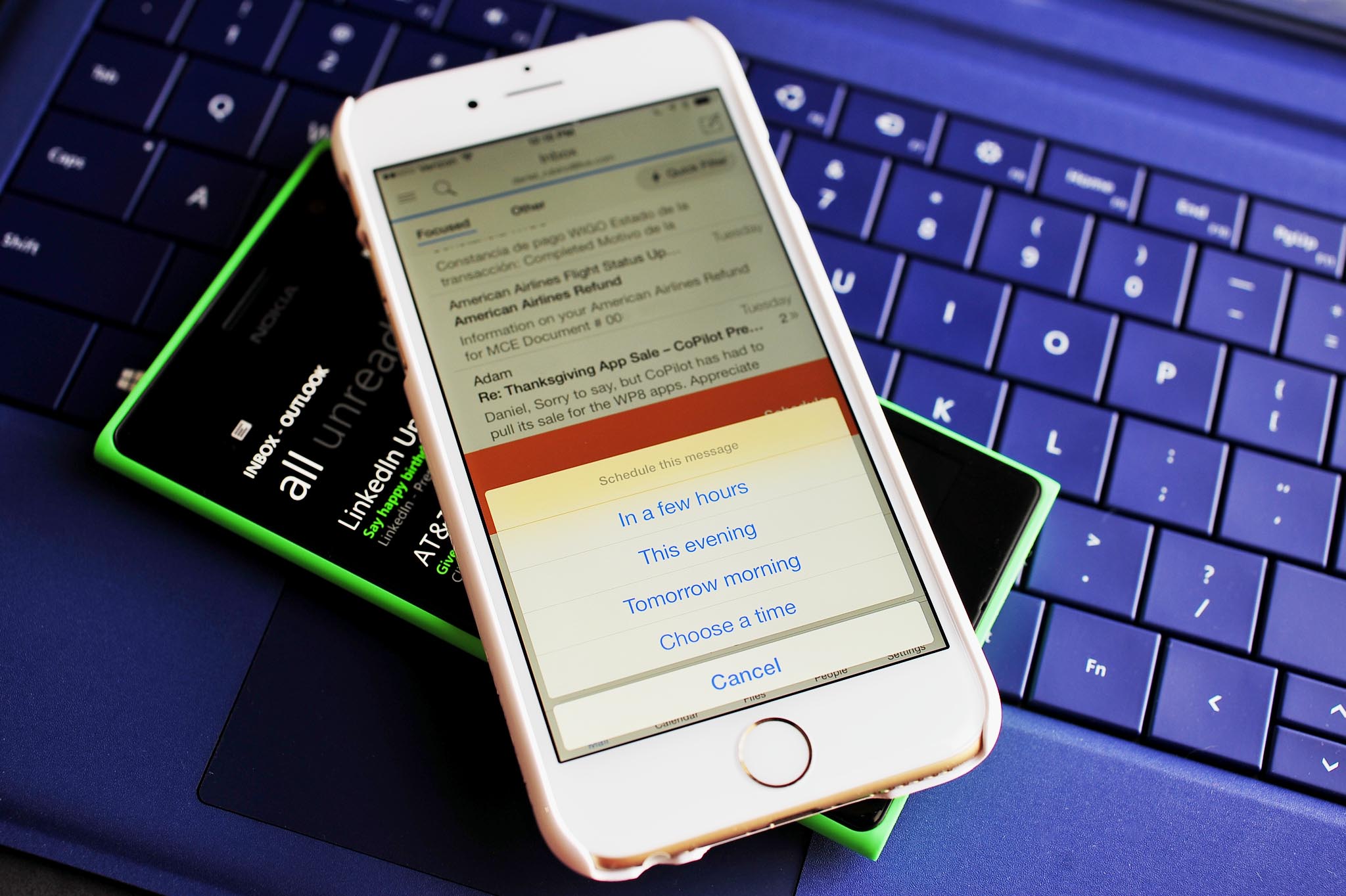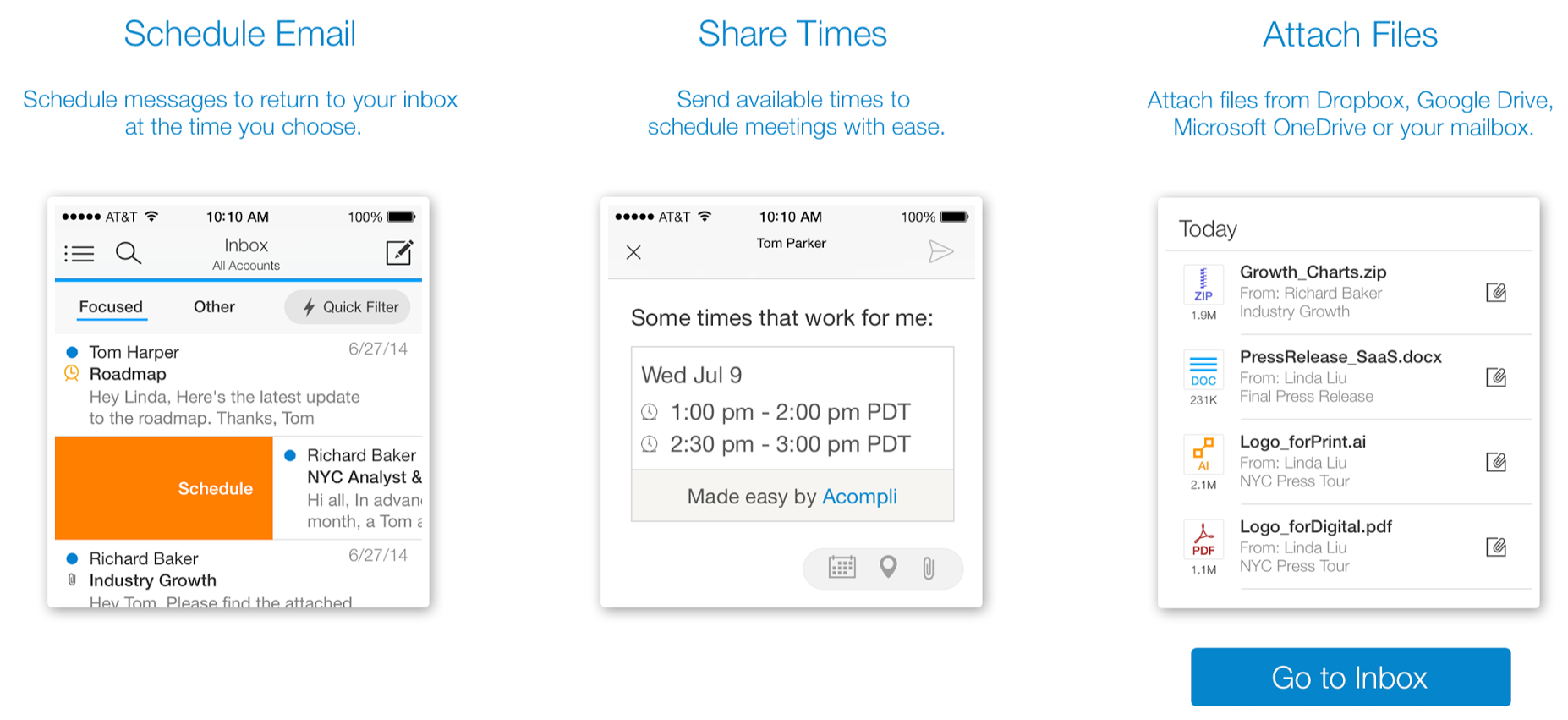What does Microsoft's purchase of Acompli mean for Outlook?

Earlier this morning, Microsoft announced the acquisition of Acompli for a rumored $200 million. For Windows Phone users, Acompli is a new name. Indeed, many of us were not even aware of the company because their claim to fame – an email client – is only available on iOS and Android.
Like many people, after hearing the news I went and downloaded Acompli to my iPhone 6 (don't fret, I keep it on standby for such instances). Let me explain why the app earns the rave reviews from users.

Clean, smart and almost universal
Acompli is attractive for a few reasons, mostly feature related:
- Multiple inbox support: Outlook, Exchange, Gmail, Dropbox, Box, iCloud and more
- Unique features: add location to email with a single button touch, send availability, and create invite
- Attach from anywhere: Accompli connects up to Dropbox, OneDrive, Box, Dropbox and Google Drive
- Focused Inbox: Acompli weeds out newsletters, spam, and other items to reveal only 'real' emails
- Scheduling: By sliding on a message, you can schedule an email to disappear and reappear in your inbox
- Calendar and Contact support
- Linked inbox view: multiple accounts can be fed into a single email inbox
Best of all, for iOS and Android, Acompli is free to use. It is not clear what Acompli's long-term business plan was for revenue, but at least this is a problem they no longer have to consider.
Overall, the app is clean, minimalist, and easy to use. If you are a fan of Outlook.com or the Windows 8.1 app, you can quickly grasp the attractiveness of Acompli for Microsoft.
Microsoft's plans for Acompli?
Despite today's announcement, Microsoft has not made clear what will happen with the app. For instance, this is the only thing Microsoft revealed on their announcement post:
"We're excited about what's possible as we build on the app's success and bring it together with work currently in progress by the Outlook team. Our goal is to deliver fantastic cross-platform apps that support the variety of email services people use today and help them accomplish more."
As a result, Microsoft could implement Acompli's design and technology into their Outlook products and for $200 million, the price of the company is relatively low for what they get.
Get the Windows Central Newsletter
All the latest news, reviews, and guides for Windows and Xbox diehards.
On the other hand and as Paul Thurrott articulated nicely, Microsoft could rebrand the app as Outlook.com in order to deliver a consistent email experience across iOS, Android, and even Windows Phone. Thurrott notes that currently, the app experience of Outlook varies across all three platforms, and this goes against Microsoft's articulated 'one' vision.
If making Accompli into Outlook is the goal, a Windows Phone/Windows universal app would likely co-launch with Windows 10 later next year. This strategy makes sense when you consider how Microsoft has decoupled Xbox Music, Video, Podcasts and even system settings like Battery Saver from the Windows Phone OS. They have done this in order to update dynamically those bits without the need for an OS upgrade. Why not do the same for the email client?
As of today, the email experience on Windows Phone is lacking even when compared to the Outlook.com version. Sure, Outlook on Windows Phone is clean, minimalist and meets the standards for average users, but Google is clearly the email-master, while iOS makes up for their anemic client through excellent third-party alternatives. Microsoft needs to beef up the email for Windows 10 and building off Acompli and taking the best of Outlook.com could be that path.
We are certainly keeping our eyes on what the Outlook team delivers in the coming months. In the meantime, tell me what you think of the acquisition and potential plans in comments.

Daniel Rubino is the Editor-in-chief of Windows Central. He is also the head reviewer, podcast co-host, and analyst. He has been covering Microsoft since 2007 when this site was called WMExperts (and later Windows Phone Central). His interests include Windows, laptops, next-gen computing, and wearable tech. He has reviewed laptops for over 10 years and is particularly fond of 2-in-1 convertibles, Arm64 processors, new form factors, and thin-and-light PCs. Before all this tech stuff, he worked on a Ph.D. in linguistics, performed polysomnographs in NYC, and was a motion-picture operator for 17 years.
